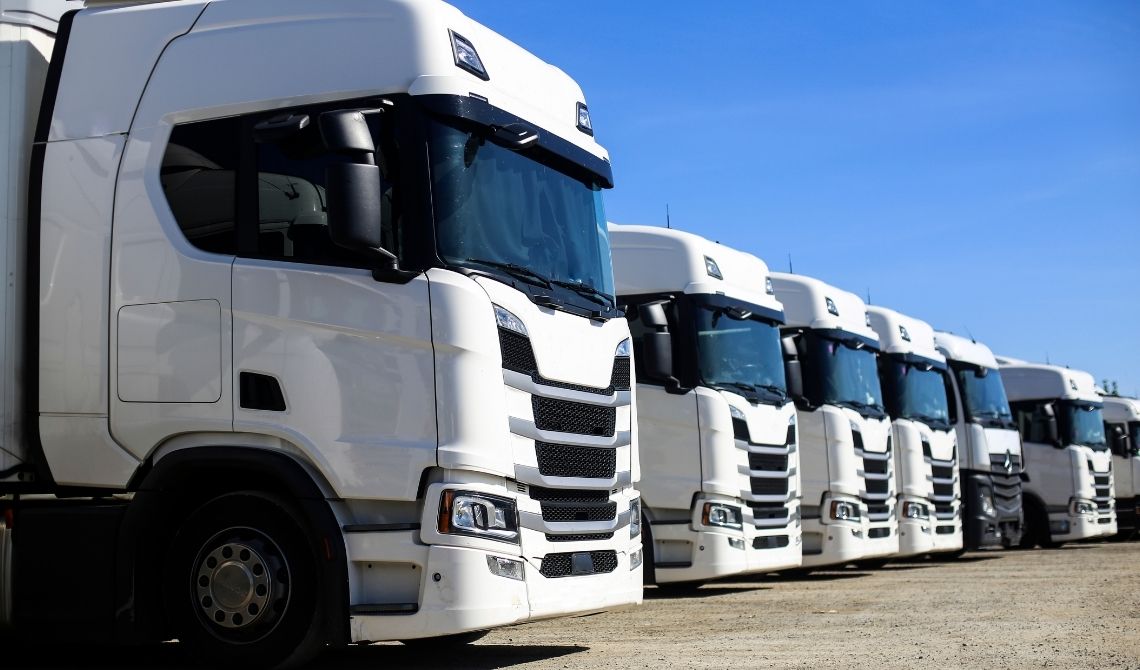Optimizing Truck Performance A Comprehensive Guide to Top-Quality Truck Body Components
Introduction to Truck Body Components
Truck Body Parts components are the backbone of commercial vehicles, playing a crucial role in their functionality and efficiency. From robust frames to reliable suspension systems, each component contributes to the overall performance and safety of the truck. Understanding the significance of these components is essential for truck owners and fleet managers looking to optimize their operations.
At the core of every truck lies its frame and chassis, providing structural support and stability. These components are engineered to withstand heavy loads and harsh road conditions, ensuring the truck’s durability and longevity. Investing in high-quality frames and chassis is paramount for maintaining safety standards and preventing structural failures.
Additionally, the truck bed and cargo box are integral components that directly impact the vehicle’s functionality. Built from durable materials such as steel, aluminum, or composite materials, these components are designed to withstand heavy payloads while offering protection from the elements. Features like reinforced corners and tie-down points further enhance their utility, making them essential for transporting goods securely.
Furthermore, suspension systems play a vital role in ensuring a smooth and stable ride for both the driver and the cargo. Whether it’s leaf spring, coil spring, or air suspension, these systems are designed to absorb shocks and vibrations, improving overall comfort and reducing wear and tear on the vehicle.
In conclusion, understanding the fundamentals of truck body components is crucial for maximizing performance and durability. By investing in top-quality components and prioritizing maintenance, truck owners can ensure the reliability and safety of their vehicles, ultimately enhancing their operational efficiency.
Robust Frames and Chassis
Frames and chassis are the foundation of every truck, providing structural integrity and support for the entire vehicle. These components are engineered to withstand the rigors of heavy-duty use, ensuring durability and safety on the road.
Robust frames and chassis are constructed using high-strength materials such as steel or aluminum alloys. These materials offer exceptional strength-to-weight ratios, allowing manufacturers to build frames that are both lightweight and incredibly strong. Additionally, advanced manufacturing techniques, such as welding and robotic assembly, ensure precise construction and consistent quality.
The design of frames and chassis is also optimized to distribute weight evenly and withstand heavy loads. Reinforced cross-members and gusseted joints provide additional strength where it’s needed most, minimizing flex and torsion during operation. This not only enhances the vehicle’s stability but also reduces the risk of structural fatigue over time.
Moreover, modern frames and chassis incorporate features to improve aerodynamics and fuel efficiency. Streamlined designs and integrated fairings help reduce drag, allowing trucks to move through the air more efficiently and save fuel. This not only lowers operating costs but also reduces emissions, making trucks more environmentally friendly.
In conclusion, robust frames and chassis are essential components of any truck, providing the foundation for reliable performance and durability. By investing in high-quality materials and construction techniques, truck manufacturers can ensure that their vehicles meet the demands of today’s transportation industry while maximizing efficiency and safety for drivers and operators.
Durable Truck Beds and Cargo Boxes
Truck beds and cargo boxes are indispensable components of commercial vehicles, designed to withstand the demands of transporting goods efficiently and securely. These components play a vital role in ensuring the safe and effective transportation of cargo, making durability a key consideration in their design and construction.
Durable truck beds and cargo boxes are typically constructed from materials known for their strength and resilience. Steel, aluminum, and composite materials are commonly used due to their ability to withstand heavy loads and resist damage from impacts and abrasion. Additionally, these materials are often treated or coated to enhance corrosion resistance, prolonging the lifespan of the components.
The design of truck beds and cargo boxes is optimized to maximize storage space while ensuring ease of loading and unloading. Features such as reinforced corners, integrated tie-down points, and removable side panels enhance functionality and versatility, allowing for the secure transportation of various types of cargo.
Furthermore, manufacturers employ advanced manufacturing techniques to ensure the structural integrity and durability of these components. Precision welding, robotic assembly, and rigorous quality control measures are implemented to guarantee that truck beds and cargo boxes meet the highest standards for performance and reliability.
In addition to durability, truck beds and cargo boxes may incorporate features to enhance safety and convenience. Integrated lighting, access ramps, and locking mechanisms are examples of features designed to improve usability and protect both the cargo and the vehicle.
In conclusion, durable truck beds and cargo boxes are essential components of commercial trucks, providing the means to transport goods safely and efficiently. By investing in high-quality materials and construction techniques, truck manufacturers can ensure that their vehicles meet the rigorous demands of modern transportation while maximizing durability and functionality for operators and fleet managers.
Reliable Suspension Systems
Suspension systems are integral to the smooth operation and stability of trucks, providing support and cushioning to absorb shocks from uneven terrain and road imperfections. Reliable suspension systems not only enhance ride comfort for drivers and passengers but also contribute to overall vehicle safety and performance.
Modern trucks utilize various types of suspension systems, each offering unique benefits and characteristics. Leaf spring suspension, commonly found in heavy-duty trucks, provides robust support and load-bearing capacity, ideal for carrying heavy payloads. Coil spring and air suspension systems offer smoother rides and adjustable ride heights, making them popular choices for light-duty trucks and specialty vehicles.
The components of suspension systems, including springs, shock absorbers, and control arms, are engineered to withstand the stresses and strains encountered during operation. High-quality materials such as forged steel and aluminum alloys are used to ensure durability and longevity, even under heavy loads and harsh conditions.
Regular maintenance and inspection are essential to keep suspension systems operating reliably. Lubricating pivot points, replacing worn-out components, and adjusting suspension settings are crucial tasks that help prevent premature wear and ensure optimal performance. Neglecting maintenance can lead to degraded ride quality, increased tire wear, and compromised vehicle stability.
Advancements in suspension technology, such as electronic stability control (ESC) and adaptive damping systems, further enhance the reliability and performance of modern trucks. These systems continuously monitor vehicle dynamics and adjust suspension settings in real-time to optimize handling and stability, especially during emergency maneuvers or adverse driving conditions.
In conclusion, reliable suspension systems are essential for ensuring the safe and smooth operation of trucks in various driving conditions. By investing in high-quality components and adhering to regular maintenance schedules, truck owners and operators can maximize the performance, comfort, and longevity of their vehicles.
Efficient Lighting and Electrical Systems
Efficient lighting and electrical systems are crucial components of modern trucks, providing visibility, safety, and functionality on the road. From headlights and taillights to interior lighting and auxiliary systems, reliable electrical components are essential for ensuring optimal performance and compliance with regulatory standards.
Trucks rely on a variety of lighting systems to illuminate the road ahead and make the vehicle visible to other drivers. LED (Light Emitting Diode) technology has become increasingly popular due to its energy efficiency, durability, and brightness. LED headlights, marker lights, and brake lights offer improved visibility and longevity compared to traditional incandescent bulbs, reducing maintenance costs and enhancing safety.
In addition to external lighting, trucks feature a range of electrical systems to power onboard equipment and accessories. These systems include alternators, batteries, wiring harnesses, and control modules, all of which must work together seamlessly to provide reliable power distribution throughout the vehicle. Advanced electrical management systems monitor voltage levels, regulate current flow, and protect against electrical faults to ensure safe and efficient operation.
Regular inspection and maintenance of lighting and electrical systems are essential to prevent malfunctions and ensure compliance with regulatory requirements. Burned-out bulbs, frayed wiring, and corroded connections can compromise visibility and safety, leading to accidents and citations. Periodic checks of electrical components and wiring harnesses help identify issues early and prevent costly repairs or downtime.
Furthermore, advancements in lighting and electrical technology continue to improve the efficiency and performance of trucks. Adaptive lighting systems, for example, adjust the direction and intensity of headlights based on vehicle speed and steering input, providing optimal illumination in various driving conditions. Similarly, integrated telematics systems monitor electrical parameters and provide real-time diagnostics to alert drivers and fleet managers of potential issues before they escalate.
In conclusion, efficient lighting and electrical systems are essential for ensuring the safety, functionality, and compliance of modern trucks. By investing in high-quality components and implementing regular maintenance procedures, truck owners and operators can optimize performance, minimize downtime, and enhance overall operational efficiency.
High-Performance Braking Systems
High-performance braking systems are critical components of trucks, providing the ability to stop safely and effectively under various driving conditions. These systems must deliver reliable stopping power while maintaining stability and control, especially when carrying heavy loads or traveling at high speeds.
Modern trucks utilize advanced braking technologies to enhance performance and safety on the road. Disc brakes have become increasingly popular due to their superior stopping power, fade resistance, and durability compared to traditional drum brakes. Additionally, anti-lock braking systems (ABS) help prevent wheel lockup during emergency stops, allowing drivers to maintain steering control and stability.
The components of high-performance braking systems, including brake calipers, rotors, pads, and hydraulic systems, are engineered to withstand the heat and friction generated during braking. High-quality materials such as forged aluminum and carbon-ceramic composites are used to ensure durability and reliability under heavy braking loads.
Regular maintenance and inspection of braking systems are essential to ensure optimal performance and safety. Brake pads and rotors should be checked for wear and replaced as needed to prevent brake fade and maintain stopping efficiency. Brake fluid levels and quality should also be monitored and flushed periodically to remove contaminants and prevent brake system malfunctions.
Furthermore, advancements in braking technology continue to improve the performance and efficiency of truck braking systems. Electronic brake force distribution (EBD) systems optimize brake pressure distribution between the front and rear axles, improving stability and stopping distance. Similarly, regenerative braking systems capture energy during deceleration and convert it into electrical energy, reducing fuel consumption and emissions.
In conclusion, high-performance braking systems are essential for ensuring the safety and reliability of trucks on the road. By investing in advanced braking technologies and adhering to regular maintenance schedules, truck owners and operators can optimize stopping performance, minimize wear and tear on brake components, and enhance overall vehicle safety.
Aerodynamic Features for Fuel Efficiency
Aerodynamic features are crucial for improving fuel efficiency in trucks, helping to reduce drag and enhance overall performance. These features are designed to streamline airflow around the vehicle, minimizing resistance and improving fuel economy, ultimately lowering operating costs and reducing emissions.
Trucks are inherently aerodynamically inefficient due to their boxy shapes and large frontal areas. However, manufacturers employ various aerodynamic enhancements to optimize airflow and reduce drag. These enhancements include cab deflectors, side skirts, roof fairings, and underbody panels, all of which work together to smooth airflow and minimize turbulence.
Cab deflectors, also known as air deflectors or roof spoilers, are mounted on the roof of the cab to redirect airflow away from the trailer, reducing drag and improving fuel efficiency. Side skirts, installed along the sides of the trailer, help minimize air turbulence and prevent air from getting trapped underneath the vehicle, further reducing drag and improving fuel economy.
Roof fairings are aerodynamic devices mounted on the roof of the cab to reduce air resistance and improve fuel efficiency. They help streamline airflow over the top of the trailer, minimizing drag and reducing fuel consumption. Similarly, underbody panels are installed beneath the trailer to smooth airflow and reduce aerodynamic drag, improving fuel efficiency and reducing emissions.
In addition to external aerodynamic features, truck manufacturers are also incorporating advanced technologies to further enhance fuel efficiency. These technologies include adaptive cruise control, predictive cruise control, and automated manual transmissions, all of which optimize engine performance and reduce fuel consumption based on driving conditions and terrain.
In conclusion, aerodynamic features play a vital role in improving fuel efficiency and reducing emissions in trucks. By investing in aerodynamic enhancements and adopting advanced technologies, truck owners and operators can significantly reduce operating costs, minimize environmental impact, and enhance overall fleet efficiency.
Advanced Safety Features
Advanced safety features are paramount in ensuring the protection of drivers, passengers, and cargo, as well as mitigating the risks associated with operating large commercial trucks. These features leverage cutting-edge technology to detect and prevent accidents, enhance driver awareness, and improve overall vehicle safety.
One of the key advancements in truck safety is the implementation of collision mitigation systems. These systems use sensors, cameras, and radar to monitor the surrounding environment and detect potential collision risks. In the event of an imminent collision, the system can automatically apply the brakes or provide warnings to the driver, helping to reduce the severity of accidents or avoid them altogether.
Lane departure warning systems are another important safety feature that helps prevent accidents caused by unintentional lane drift. These systems use cameras or sensors to monitor the vehicle’s position within its lane and provide alerts if the vehicle begins to drift out of its lane without signaling. By alerting drivers to potential lane departure incidents, these systems help reduce the risk of collisions and improve overall road safety.
Additionally, trucks are increasingly equipped with technologies such as blind-spot monitoring and rearview cameras to enhance driver visibility and awareness of surrounding traffic. Blind-spot monitoring systems use sensors to detect vehicles in adjacent lanes that may not be visible to the driver, providing visual or audible alerts to prevent lane-change collisions. Rearview cameras offer improved visibility when reversing or maneuvering in tight spaces, reducing the risk of accidents and property damage.
Moreover, advancements in vehicle-to-vehicle (V2V) and vehicle-to-infrastructure (V2I) communication technologies are further enhancing truck safety. These systems allow trucks to exchange information with other vehicles and infrastructure elements such as traffic signals and road signs, providing real-time data on traffic conditions, road hazards, and potential dangers ahead.
In conclusion, advanced safety features are essential for improving truck safety and reducing the risk of accidents on the road. By investing in technologies that enhance collision avoidance, driver awareness, and communication, truck owners and operators can protect their drivers, passengers, and cargo, while also improving overall fleet safety and efficiency.
For detailed information, you can contact us at Truck Body Parts.


